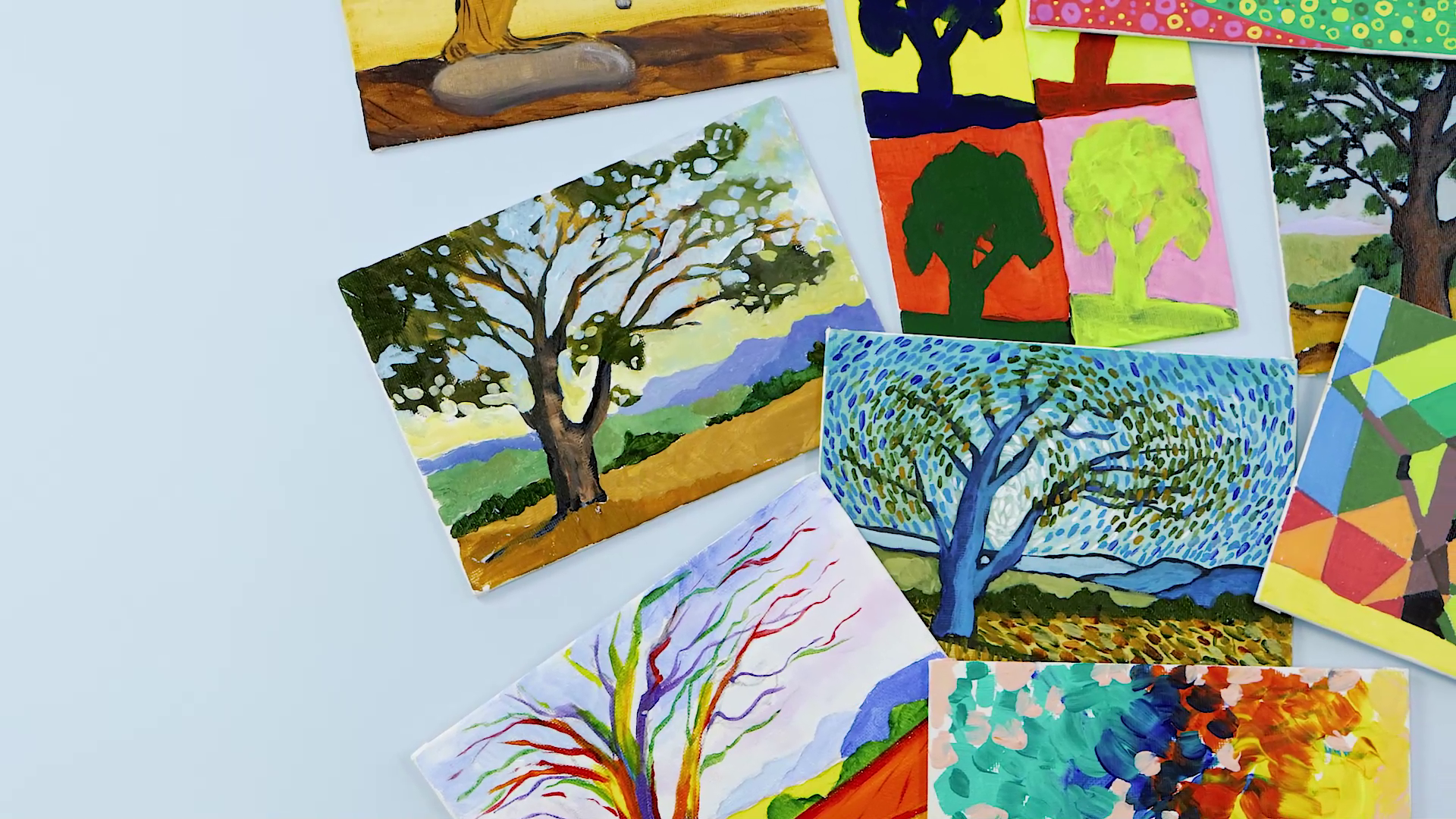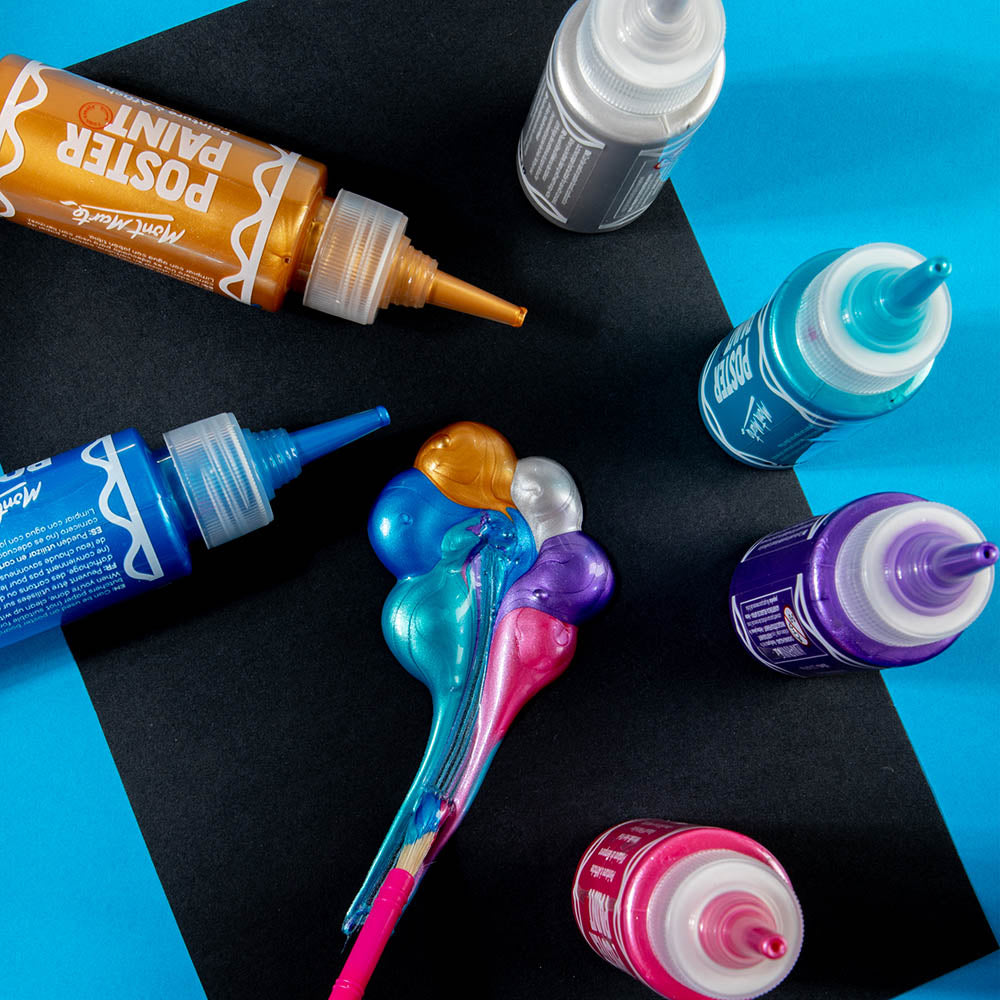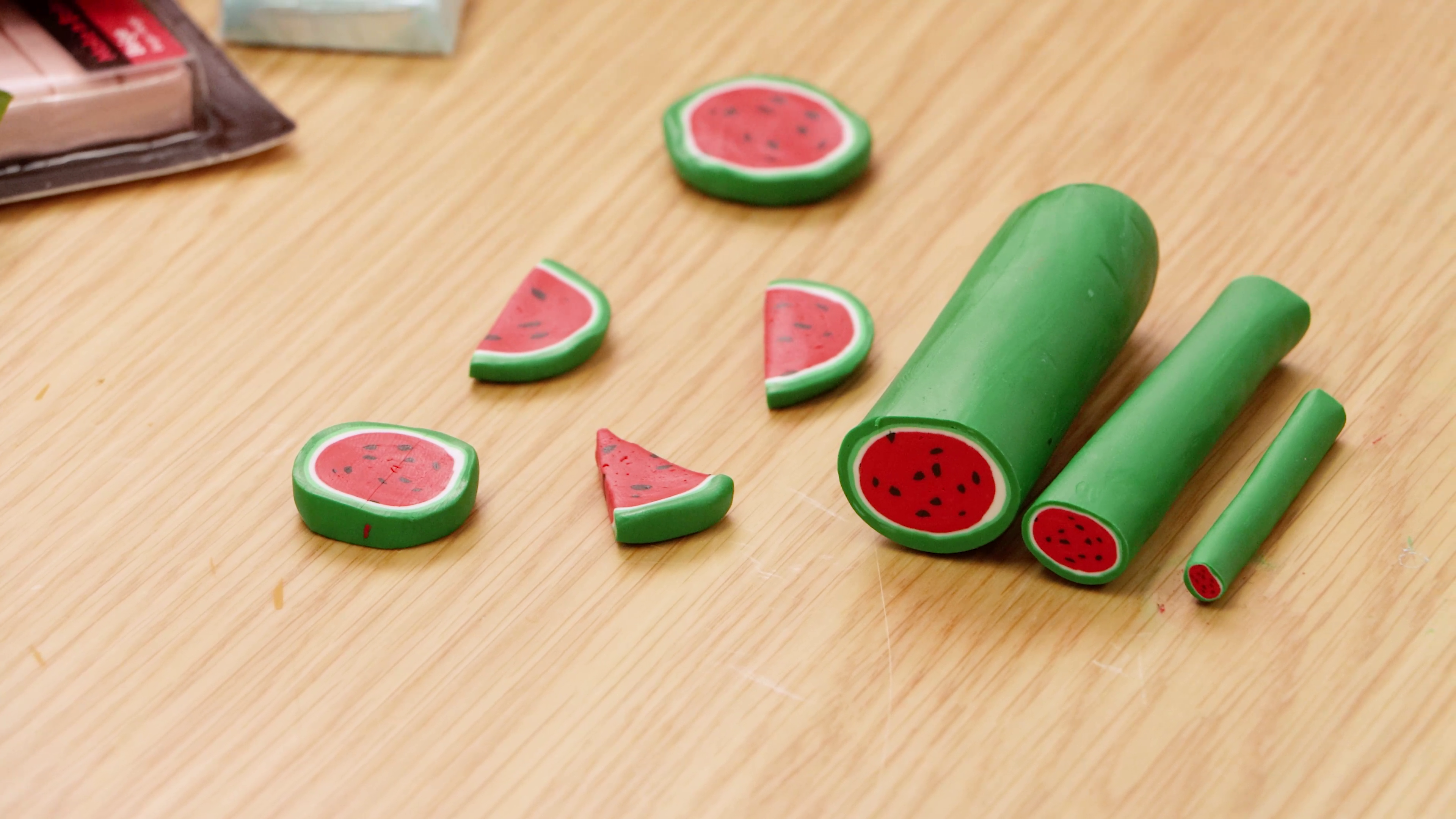Part 1
Part 2
Whether you’re finding your own style or just want to try something new, we’re stepping you through it all, in this guide to different types of painting styles.
Impressionism 1860 – 1880
The Impressionist painting style had an emphasis on light, colour and capturing the ‘every day’. Impressionism rejected the academic and historical styles of painting which were very popular at the time. Impressionists preferred to paint outdoors (plein air painting) to capture their subjects in various lighting conditions.
Key artists were Claude Monet, Pierre- August Renoir, Edouard Manet and Edgar Degas. Because these artists captured fleeting moments like sunrises and sunsets, they had to work quickly. The main characteristics of the Impressionism style were quick, gestural brush strokes and wet-on-wet painting techniques.
Post Impressionism 1880 – 1905
When we think of Post Impressionism art, artists like Vincent Van Gough, Georges Seurat, Paul Gaugin and Paul Cezanne probably spring to mind. Like the Impressionists before them, this group of artists focused on light and colour but with a lot more emotion and optical blending in their works.
Though this painting style rejected Impressionism, they were quite similar in style, with optical blending and choppy brush strokes. But the main difference was the subject matter and use of emotion. Think quick movements, short, choppy brush strokes and a lot more broken colour for blending. Pointillism was also developed during this time, where tiny dots of paint are applied close together to optically blend from a distance. Looking for a project? Paint a landscape Van Gogh style in acrylics.
Art Nouveau circa1890 – 1910
You might have heard of “art nouveau” in design, film and architecture, but this painting style had a start in art too. Art Nouveau had a real emphasis on design, architecture, and concerned the natural world. Insects, flowers, humans and nature often appeared in their works, and you could expect those architectural elements like stain glass windows, gold leaf and mosaics to appear in this style too.
Woodcuts, lithographs and Japanese-style motifs were popular at the time. Plus, curved forms and asymmetrical shapes were also key characteristics in Art Nouveau style.
Even more, this style also brought graphic design to the front centre. Posters were previously considered advertisements, but this movement now considered them as “art.” Key artists during this time are Gustav Klimt and Henri de Toulouse-Lautrec.
Fauvism 1905 – 1910
The Fauvism movement was given the name by a critic who called their work the “wild beasts.” The name stuck and the movement began to gain traction by artists like Henri Matisse, Andre Derain and Maurice de Vlaminck.
Fauvism focused on the richness of pure colour. Paint was applied straight from the tube and with great force! Traditional colour choices in landscapes were replaced with bright, bold colours -- skies weren’t blue, they were now red. Trees weren’t green, they were now purple. Fragmented shapes and lines of colour made up this different painting style as well, along with expressive and energetic brush strokes.
Cubism 1907 – 1914
We probably all know Pablo Picasso, but what about Georges Braque and Juan Gris? These artists were some of the early founders of the Cubist movement, which focused on geometric shapes and showing multiple angles all at once.
This style throws the traditional rules of foreshortening and perspective out the window and instead focusses on geometric shapes on a 2D picture plane, with a monochrome palette. In the Cubist style, subject matter was often objects with interesting shapes, think: musical instruments, bottles, glasses, newspapers and human figures.
Surrealism 1920 – 1940
Surrealism is all about the dream world and unlocking the unconscious mind. Inspired by theories of psychology from Sigmund Freud and ideas from Andre Breton, Surrealism was born. Key artists of this movement were Salvador Dali, Rene Magritte and Max Ernest.
Personal symbolism, humour and satire was often used in their art. Ideas came to them from dreams and they played games to develop new ideas. Surrealism is also said to be influenced by the previous art movement before them, Dada.
The surrealism painting style used distorted shapes, figures, and perspectives to create unique works of art like trains emerging from fireplaces, melting clocks and swapping out apples for faces. This movement also heavily juxtaposed different objects and played with proportions to create those dream-like states of mind in their art. You can find out how to paint a Surrealist-inspired portrait here.
Abstract Expressionism 1940s – 1960s
This style was about freedom, personal expression and spontaneity. Key artists were Jackson Pollock, Mark Rothko, Willem de Kooning and Helen Frankenthaler. Within Abstract Expressionism, there are two different painting styles: action painting and colour field.
In action painting, you can expect expressive or slashing brush strokes and dripping paint directly onto the canvas. Much like, Jackson Pollock’s technique of working quickly and throwing paint at a canvas.
With colour field painting, think Mark Rothko’s style of using flat colours, painting large areas with a solid colour. Or even, de Kooning’s style of creating thick stripes of paint to create stark contrasts and you’ll be well on your way to defining abstract expressionism.
Pop art 1950s – 1980’s
Pop art is a well-known painting style, but what influenced it? Pop culture of course! Commercialism, mass-production, and celebrity culture were all popular topics of conversation and artists like Andy Warhol, Roy Lichtenstein, Keith Haring and Richard Hamilton brought these ideas to art.
In the Pop Art style, we see lots of bold colours. Brush work was flat, primary colours were used for bright contrasts and dark outlines gave their work a comic-book effect. Repetition and repeated motifs were also used here too, like Andy Warhol’s soup cans. Silk screen printing, collages and the use of every-day items to create art, was a key characteristic of Pop Art. Create your own Andy Warhol style artwork with this project.
Minimalism 1960s – 1970s
This painting style relied on a simple object to show harmony, order and symmetry. Though minimalism combined sculpture with art to shows objects as they are,
minimalist paintings were also created during this time.
As Pop Art was very repetitive and bright, Minimalism was the stark opposite, it focused on just one object. The Minimalist style was very subjective and conceptual, and the audience added their own meaning to the objects and geometric forms in question. Key artists during the Minimalism movement were Carl Andre, Dan Flavin, Donald Judd and Sol LeWitt
Post modernism 1990’s – Now
Post modernism is a movement that sprung up around the 1990’s with more conceptual and provoking art taking place. Post modernism questions pre-conceived ideas and what makes us wonder what makes art “art.” Post Modern artists include the likes of Damien Hirst, Ai Weiwei and Yayoi Kusama.
Characteristics of the Post modernism style are the idea that, art is an appropriation of work or ideas that have been produced before, so we can expect to see more artist inspired art or art paying homage to various styles. It can be political and controversial and often relies on audience to question the art.
Renaissance Art (1400 – 1600)
This art movement is typically what a lot of people think of, when they think of traditional art, (we’re talking the Mona Lisa, The Creation of Adam and The Birth of Venus). French for re-birth, the Renaissance art movement was all about nature and humanity, which was quite a big deal back then. Michelangelo, Leonardo da Vinci, Raphael, Titian, and Botticelli were key artists.
Foreshortening was used in Renaissance art to add depth and perspective to works. Symmetry and proportion were also used to create realistic human figures and this helped make their portraits and figures look well balanced. Da Vinci used the Sfumato technique to get those soft transitions between tones. This helped blend out darker edges and gave his portraits a softer look. In this video, we’ll show you how to create the sfumato technique.
Romanticism (1798 – 1837)
There were large developments in freedom and revolution during this time, like the French Revolution, which then spawned the Romanticism movement. This was all about sense and emotions (both good emotions like freedom and the bad like struggles); people got into poetry and even the supernatural during this time and we can sometimes see this in art. Key artists were Fancisco Goya and Casper David Friedrich.
In Romantic art, we can see expressive lines used. Subjects are in natural environments and the people painted are often quite young and youthful. Plein air painting was also a chance for artists to paint outside for more freedom and spontaneity in their lives.
Sci-Fi art 1930’s – 1980s
Sci-fi or “Science Fiction” in art, is quite a general style, believed to have surfaced during the Great Depression. During this time, pulp magazines (small, cheap fiction magazines) were sold, but because money was tight during the 1930’s they became difficult to sell. To try and sell more magazines, artists and designers created sci-fi art on front covers. With advances in technology and the great Space Race, the genre remained strong for many years. Key artists of this style include Vincent Di Fate and John Berkey.Inspired by fantasy, Surrealism and pop culture, key characteristics of this style are imaginative, futuristic concepts in a darker colour palette. The subject matter usually includes dystopian universes, aliens, spaceships, and planets.
Abstract art style (1911 – Present)
Wassily Kandinsky is one of the earliest pioneers of abstract art, renowned for his spiritual abstraction work that opposed traditional realism. There are so many different ways to interpret and paint abstract art, but the core requirement is to communicate through linework, colours, forms, shapes, and marks in a way that doesn’t realistically capture the subject matter.
This style can vary from flat and monochromatic to textured and colourful. Why don’t you look up some famous abstract artists like Kandinsky, Hilma Klint, and Clyfford Still, and have a go putting your own spin on it at home?
What different types of painting styles do you love? Try one for yourself and #montmarteart or tag us @montmarteart on Instagram or Facebook, we’d love to see what you create.
Or for more artist inspired projects, check out our projects page. From Van Gogh to Andy Warhol, Francois Neuilly, Leonid Afremov and more, we’ll show you how to create the rest.





























